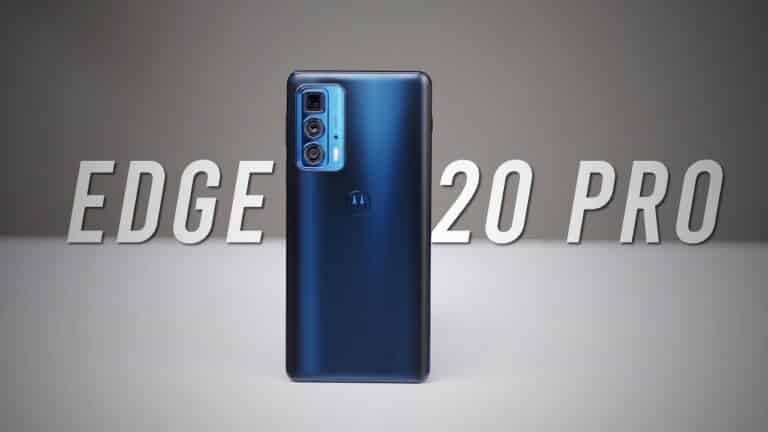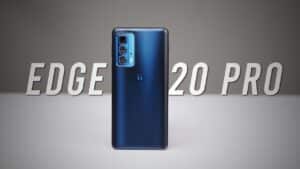The Motorola Edge 20 Pro is the highest model in Moto’s range of flagships, which are the successors to the Edge and Edge Plus from the previous year. Don’t worry, you didn’t miss out on 18 phone generations — the corporation has gone directly from the original series to 20.
Regardless of the specifications or its low price, this phone isn’t as exciting as others in the original Edge series. It loses its trademark super-curved-edge screen hence the extra functionality is introduced, and it doesn’t feel like a premium to handle.
Is the Edge 20 Pro a solid phone and worth your money, aside from comparisons to the 2020 Edge series? That’s a difficult topic to answer because it’s a good phone with a lot of flaws. There are some positive aspects to the phone. Its cameras work well for a Moto smartphone, the high screen refresh rate makes motion seem fluid, and the battery easily lasts a day of use.
Another great addition is the Snapdragon 870 chipset. In terms of raw performance, it’s only slightly less powerful than the top-tier Snapdragon 888, but it enables the device to be cheaper and avoids the overheating difficulties that plagued the 888.
So, if you want a functional gadget that lacks certain premium features, you could do much worse… but you could also do much better. At this price range, devices such as the OnePlus 9 outperform the Moto in many ways, and you can purchase better phones for less.
So, while the Motorola Edge 20 Pro is a phone worth considering, and you could find it appealing, it is far from the most competitive mobile.
What will you see here?
Price & Availability

The Motorola Edge 20 Pro costs £649, making it significantly less expensive than the £1,050 Edge Plus from 2020. Motorola has said that the change from ‘Plus’ to ‘Pro’ was made to reflect the price increase.
At launch, the Edge 20 Pro competes most directly with the OnePlus 9. Another phone is priced on the boundary between the mid-range and premium categories.
The Motorola Edge 20 Pro was first revealed for the United Kingdom and Europe. Reports claim it may be sold in the United States as well, while an Australian launch is improbable due to the Edge phones not arriving there until 2020.
However, it appears that the Motorola Edge 20 will be offered as the Motorola Edge in the United States, maybe with slightly different features, and it is unclear whether this Pro variant will ever be available there.
Design
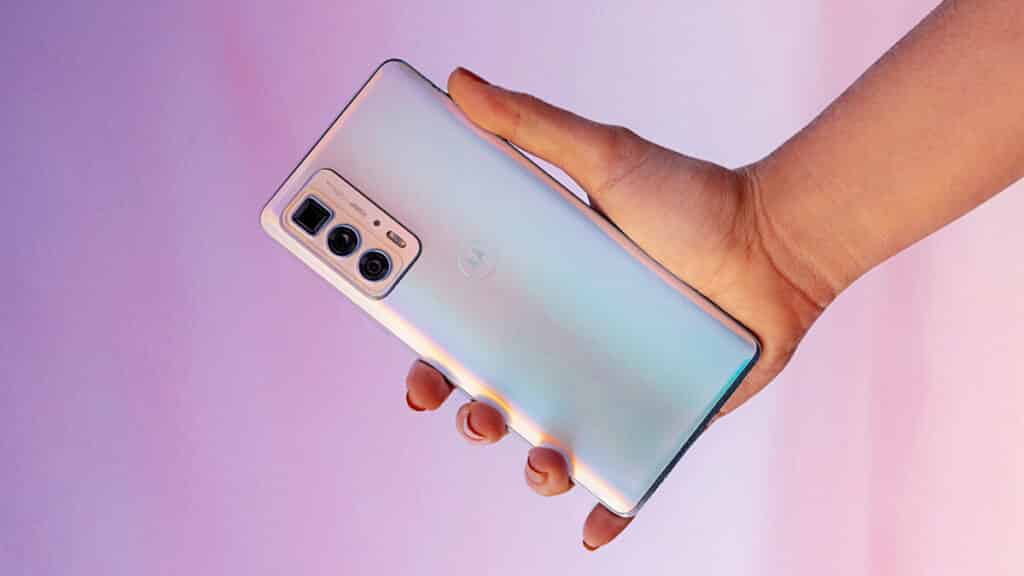
The Motorola Edge 20 Pro is a large phone; it has some difficulty using it one-handed, due to its button placement, and it didn’t fit properly in our hand.
It has dimensions of 163 x 76 x 8mm. Several challenges arise as a result of the size. You’ll have to extend to see much of the screen; the side-mounted fingerprint sensor was so high that you really can not easily reach it; and when you stretch your hands, the device’s flat edges cut into your palms enough that you can feel it. The hand-feel of the Edge 20 Pro is simply ‘off.’
The volume rocker is located above the fingerprint scanner on the phone’s right side, and we found it tough to reach without altering how you held the phone or using the other hand. There’s also a Google Assistant button opposite, which is tough to reach with one hand. However, unlike on some other Moto phones, it’s similarly tiny, so you’re unlikely to unintentionally click it.
The phone includes a USB-C connector on the bottom, but no 3.5mm headphone jack, which is unusual for Moto phones.
A rectangular camera bump on the rear houses the three lenses, flash, and zoom mic. It’s not excessively thick, so while you can’t rest the phone flat on a table, it doesn’t make pocketing the phone difficult.
The device features a glass front and back unless you choose the Vegan Leather version, which has a faux leather back, and both the leather and glass variants are blue. Neither model has an IP certification, however, Motorola claims the phone is water-resistant.
Display
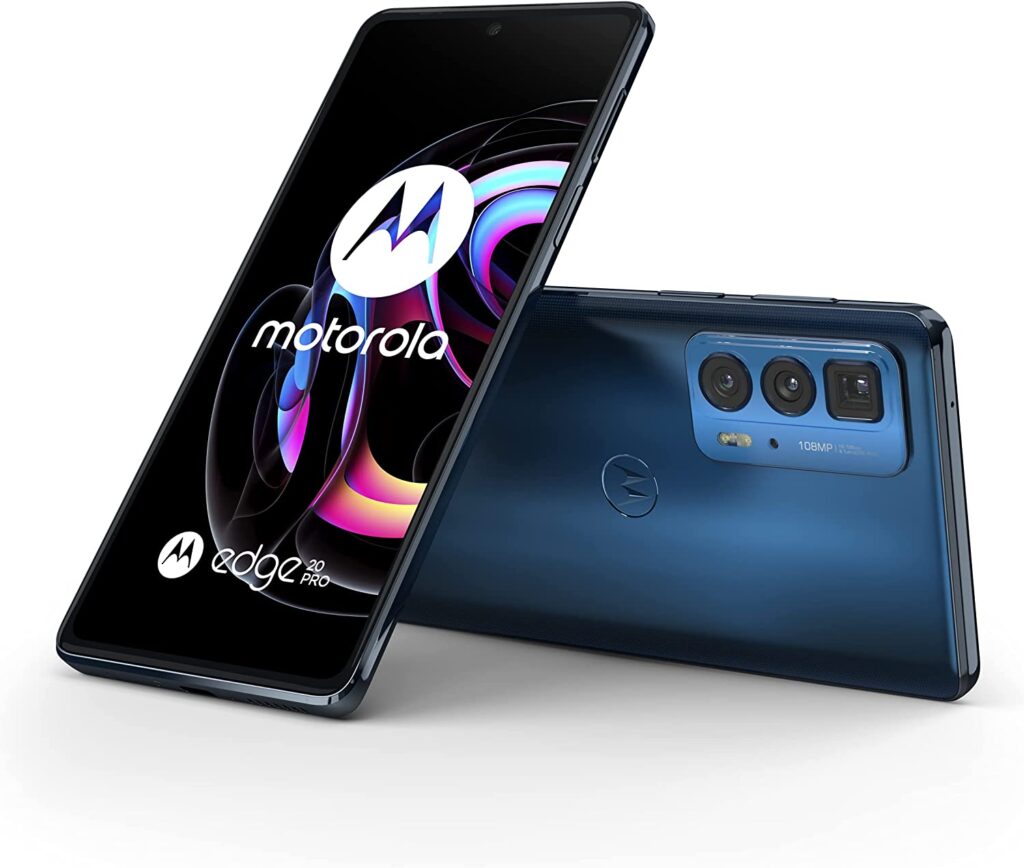
The Motorola Edge 20 Pro, like every other member of the Edge family, has a 6.7-inch screen with plenty of viewing space. Unlike previous generations, the screen is flat to the corners, except for a circular cut-out for the front camera.
It has an OLED display with a 1080 x 2400 resolution and HDR10+ compatibility, which is comparable to most competitive devices.
The 144Hz refresh rate, which implies the screen image changes 144 times per second, is a surprising feature. For a long time, 60Hz was the standard, but in recent years, several smartphones have come out with 90Hz or 120Hz displays; 144Hz is now quicker, and just a few phones meet or exceed this figure.
As a consequence, motion on the Edge 20 Pro’s display appears quite fluid, something some phone aficionados will like, but not everyone will notice or care about.
Specifications and Performance
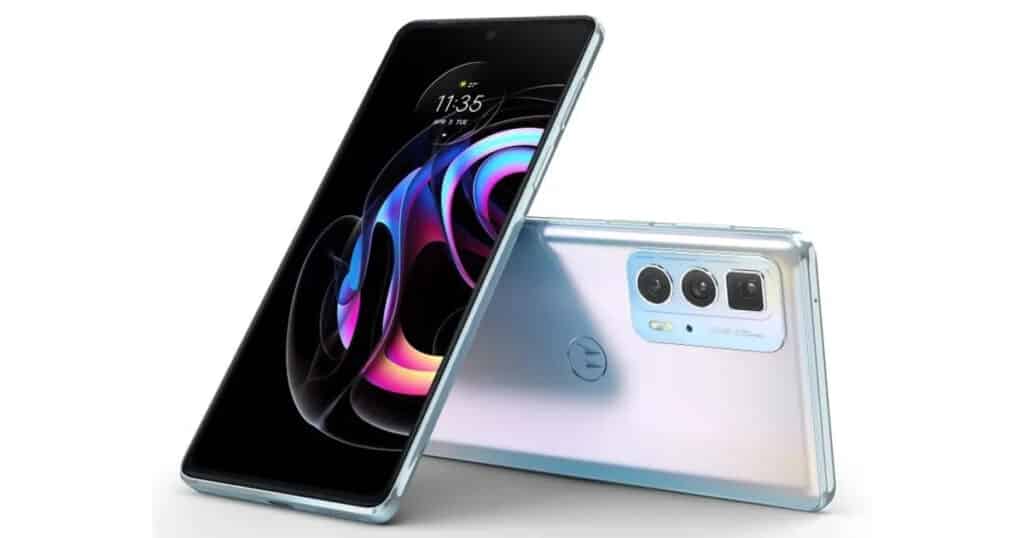
The Snapdragon 870 chipset is the ‘brains’ of the Motorola Edge 20 Pro. Technically, this isn’t the greatest CPU for Android phones, as the Snapdragon 888 outperforms the 870 in terms of power. However, the distinction between the two is minor, and the 870 lacks the 888’s frequently reported overheating difficulties, making the not-quite-top-end chipset a good choice for many inexpensive phones.
When tested, the phone achieves a multi-core score of 2878, which is nearly identical to the Moto G100’s score of 2875. However, it falls well short of the 3369 of the Poco F3 and the 3381 of the Vivo X60 Pro, both of which feature the 870. However, such distinctions are unlikely to be discernible in everyday use.
The processor is combined with 12GB RAM, which is a great number, as well as 256GB storage, which is also a decent offering but cannot be expanded.
Because this is a 5G phone, you’ll be able to connect to next-generation networks, albeit this is dependent on your contract and where you reside, so your mileage will be determined by those variables rather than the Edge 20 Pro itself. We had no trouble connecting to 5G networks offered by Vodafone in the United Kingdom.
This is one of the few Motorola phones without a 3.5mm headphone port, and while the loudspeaker is adequate, it will not provide the acoustic quality that headphones will. For the finest audio experience, we recommend investing in a USB-C to 3.5mm converter, or even better, wireless earphones.
Software

The Edge 20 Pro, like other Motorola phones, runs a clean version of Google’s Android software, with the device running Android 11 out of the box. It will very certainly be eligible for the update to Android 12, as well as subsequent releases of the OS when they become available.
That means the software will appear just as it would on a Pixel phone, without the toppings and design modifications that other firms use. Icons are circular, downloaded apps are kept in an app drawer, and alerts are divided into media, conversations,’ standard’ app notifications, and silent pings.
Motorola does add a couple of its gimmicks, like its quite handy time-saving activities. These allow you to swiftly activate features with unique motions, the user favorite being a double ‘karate chop’ movement to switch on the flashlight.
If you’re new to Motorola phones, it may take some time to get acclimated to the activities, but once you do, it’s difficult to go back.
The phone comes with a cable for Ready For and is thus compatible with it. This is Motorola’s Dex competitor, which allows you to connect your handset to an external monitor for some purposes, like your computer screen or TV.
Ready For can be used for work by displaying apps on a larger screen; for entertainment by displaying material from streaming apps on a larger screen; for video calls; and a few more purposes. It has the potential to be a really valuable service, albeit some people will find it more beneficial than others.
Cameras
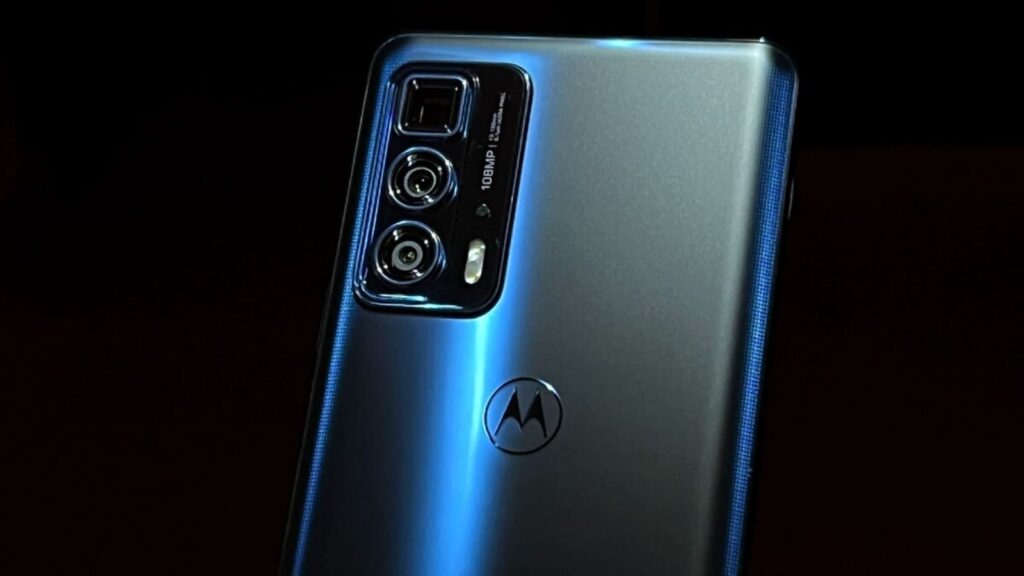
The Motorola Edge 20 Pro features a good camera lineup — which is unusual for a Moto phone, given that their cameras are often subpar. Due to some debatable optimizations, it’s not a brilliant camera phone, but users won’t nevertheless be delighted with the photos it captured.
108MP Sensor
On paper, a 108Mp primary snapper seems good, but how does it function in practice? It’s simply fine. Not terrible, but not spectacular.
To begin with, the 108Mp resolution does not activate on its own. To activate it, you’ll need to go into the settings. However, bigger does not always imply better. The Edge 20 Pro, like other phones that entice buyers with a high megapixel count, uses pixel-binning to reduce the ultimate resolution to 12Mp.
That should still allow for superb photography, as seen by the iPhone 13 and Google Pixel 5, both of which feature 12Mp primary cameras; nevertheless, photographs appear to be lacking on the Edge 20 Pro.
While images taken in clear daylight are crisp, vibrant, and colorful, there is a notable loss of clarity when using a telephoto lens or shooting in low light circumstances. Edges begin to blur, and surfaces and textures look smooth and bland. If the illumination is too dim, you’ll see an unsettling amount of graining.
13MP Selfie Sensor
This is likewise true for the front-facing 32Mp camera. If you’re in a well-lit room or sunlight, you’ll be OK, but there will be a loss of detail and extra grain if you’re in less favorable lighting.
In several cases, it’s difficult to reliably blur the backdrop in portrait mode, resulting in a blotchy look in the foreground.
This should not be the case with a Price of £649 on the table. For the same price, you can acquire the ZTE Axon 30 Ultra, which has some of the finest camera technology. Even the £399 OnePlus Nord 2, the current monarch of mid-range phones, wows with its photography.
It’s a shame the cameras aren’t somewhat better since this would make the Edge 20 Pro an excellent all-arounder. If you don’t care about mobile photography, the Realme GT 5G is the Edge 20 Pro’s main rival, with a Snapdragon 888 CPU, a 120Hz AMOLED display, and 65W fast charging. It also costs less than £500, making its average cameras more acceptable.
Battery Life
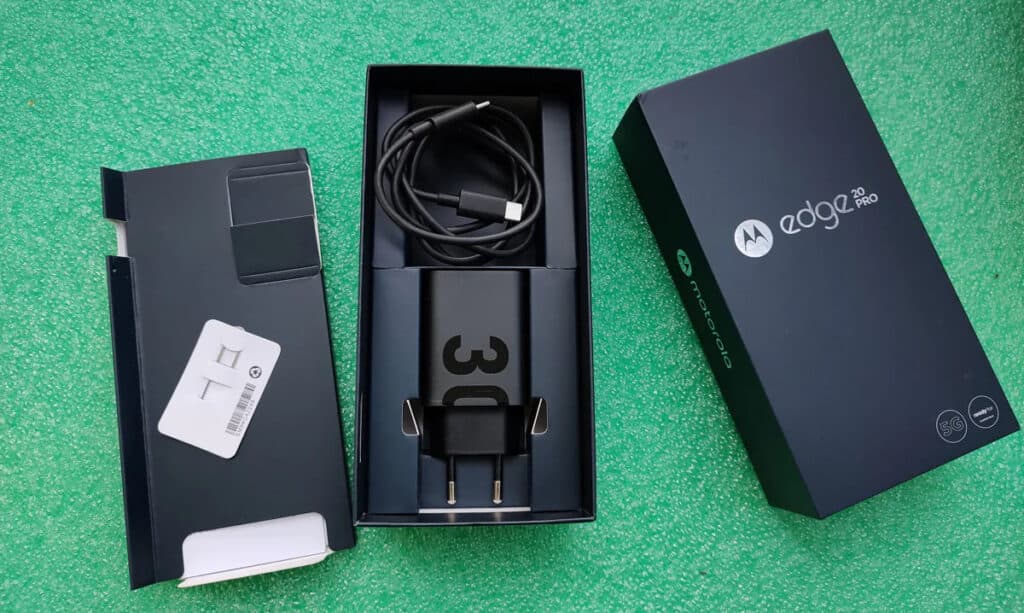
The Motorola Edge 20 Pro’s 4,500mAh battery performs admirably, the phone last about a day between charges. This was not the case when you use the device extensively, but with moderate use — occasional social media, streaming music, and the odd snapshot – the battery readily lasted until the end of the day.
Given the big size and high refresh rate of the screen, a full day of battery life is respectable, while some other Moto devices may last up to two days.
The charging speed is 30W, which is quicker than Samsung’s and Apple’s top phones but falls short of the 65W, 90W, or 120W charging speeds offered by other handsets at this price. Charging the gadget from empty takes roughly an hour at 30W.
However, unlike last year’s Edge Plus, there is no wireless or reverse wireless charging, which is likely due to Motorola’s desire to bring this phone in at a cheaper price point.
Conclusion
The Motorola Edge 20 Pro boasts a respectable CPU, strong cameras, and a reasonably long-lasting battery, all of which contribute to it being a viable gadget. However, it’s heavy and uncomfortable to hold, and it lacks anything genuinely distinctive to offer. Which makes it difficult to suggest among the plethora of comparable gadgets in the competitive mid-range market.


